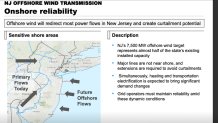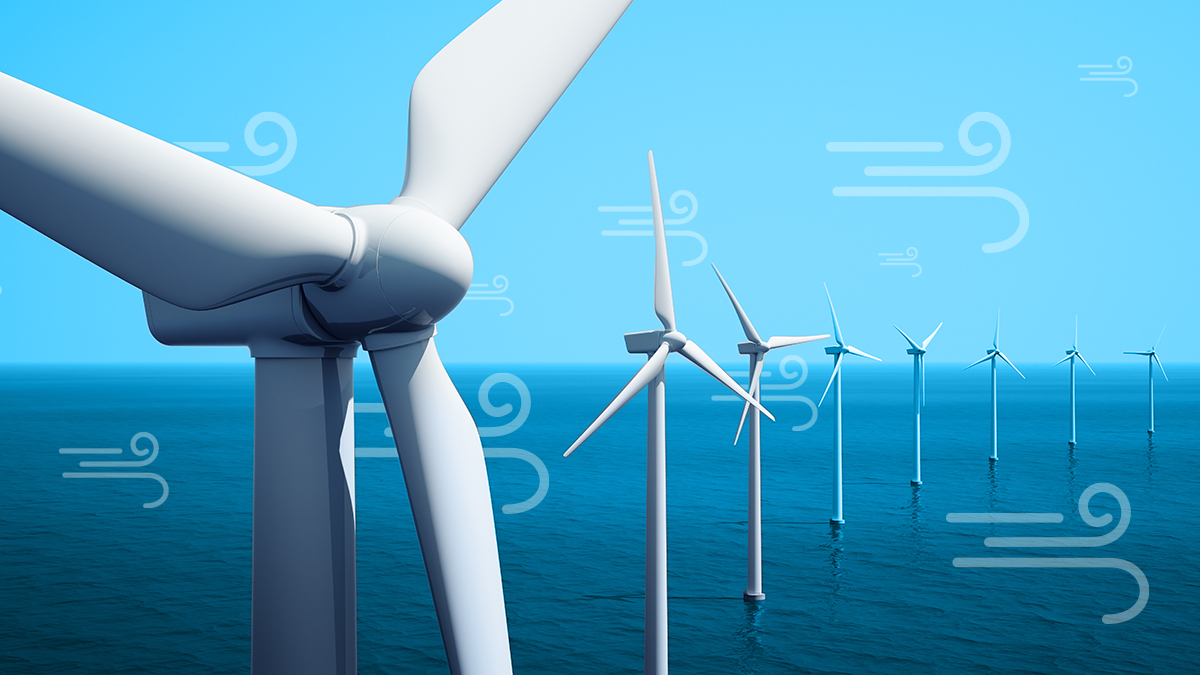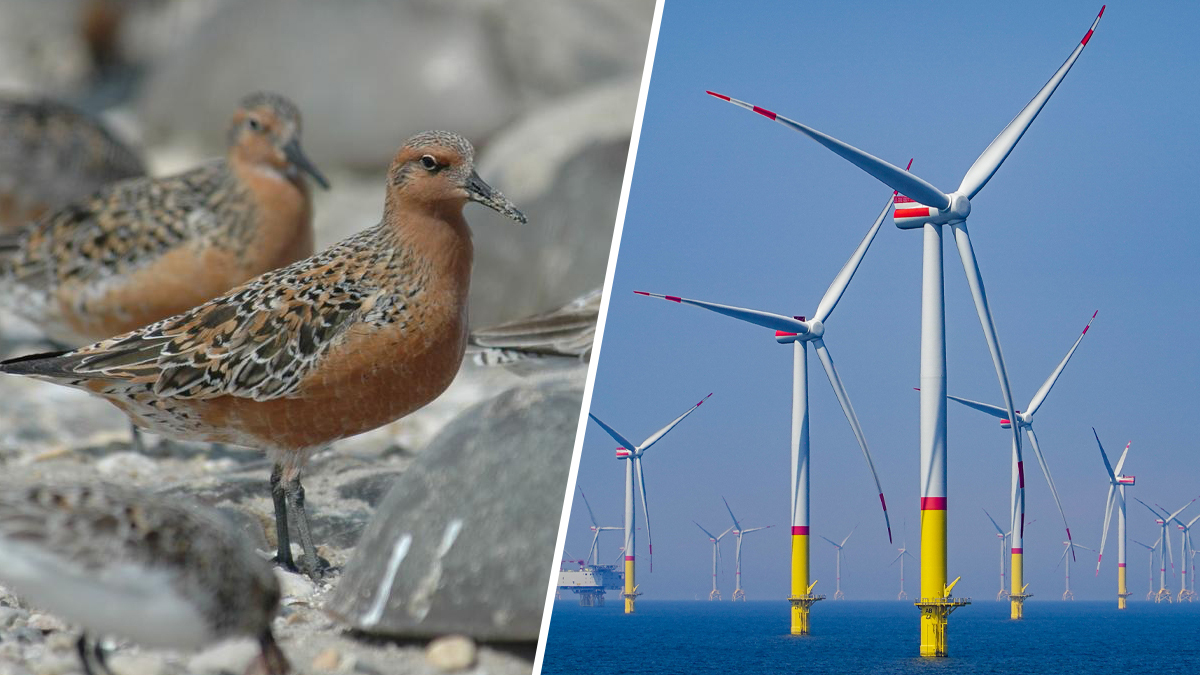The Atlantic Ocean off of New Jersey and New York will become the epicenter of a national effort this decade to energize its power grid with renewable sources like wind and solar after President Joe Biden named the continental shelf off the two states as a "wind energy area."
The White House's announcement Monday locks in the federal government to an already all-in race by Mid-Atlantic coastal states to build thousands of skyscraper-sized turbines.
The efforts to build wind farms from North Carolina's Outer Banks to Cape Cod off of Massachusetts are already nearly a decade in the making, with 17 current projects in development up and down the coast. Several are in planning stages for the waters off of New Jersey and New York. All involve European power companies, including the Danish developer Ørsted, which in 2019 won New Jersey's first bid for a farm.
For years, the projects languished in a federal queue or permitting processes at the state level. But recently, governors like Phil Murphy in New Jersey have established ambitious goals for renewable energy production from wind farms. Biden's announcement all but cements offshore wind's place in the future of American power production.
Get top local stories in Philly delivered to you every morning. Sign up for NBC Philadelphia's News Headlines newsletter.
Only seven wind turbines currently rotate in American waters, but more than 1,500 are in planning or development stages from North Carolina to Massachusetts, according to an NBC10 Philadelphia analysis of the federally leased areas and the 17 projects currently in development.
Offshore Wind Farms: The Lease Areas and Developers
Seventeen federally leased areas are off the coasts of eight U.S. states. Click on each lease site to see how many turbines are expected or estimated, to which developer they belong and how much power will be generated. Turbine totals are either based on developers’ proposals or estimated using power generated by the largest turbine currently on the market.
Data: Bureau of Ocean Energy Management
Nina Lin / NBC
What Does Offshore Wind and Solar Farms Have to Do With the Power Grid?
For the last century, the energy grid has connected power plants, fueled by coal, oil and gas, to homes and businesses through a network of utility lines and power substations.
Traditionally, power plants have been closer to the center of the country — places like Ohio, West Virginia, western Pennsylvania, Tennessee where fossil fuels were mined.
Offshore wind farms would dramatically change the country's power grids and the flow of energy. Meanwhile, solar arrays are already popping up across the country daily, with once-proud agricultural states like Pennsylvania transforming underperforming farms into energy producers.
Earlier in March, Pennsylvania Gov. Tom Wolf announced that the state would invest in seven solar arrays across six counties to provide power for roughly half the state's agencies.
Compared to the solar arrays, however, the offshore wind farms present a more complex challenge for the existing power grid.
At a conference of offshore wind industry leaders and experts in energy infrastructure hosted by the New Jersey Board of Utilities in late February, one utility executive said the power grid is "used to a west-east flow of energy" and "as we move into this new era, we’re going to encounter a very different set of problems."

What Is the Jones Act, and Why Did President Biden Mention It in Announcing the 'Wind Farm Area'?
The Jones Act is a 100-year-old federal law requiring all ships that deliver goods domestically to be built in the United States.
That presents a unique problem for the offshore wind industry, which needs massive vessels that specialize in the installation of wind turbines to be built in the United States in a hurry.
Biden said in his announcement Monday that Virginia-based Dominion Energy is in the process of building one of these vessels in Texas.
"The industry will also spawn new supply chains that stretch into America’s heartland, as illustrated by the 10,000 tons of domestic steel that workers in Alabama and West Virginia are supplying to a Texas shipyard where Dominion Energy is building the Nation’s first Jones Act compliant wind turbine installation vessel," the White House said.
An executive with one of the offshore wind farm developers told NBC10 Philadelphia recently that even without the specialized installation vessel, the first wind farms that gain federal approval would be able to make do in the short-term with existing U.S.-flagged vessels that aren't specifically designed to install turbines.
Will Republicans Support Efforts by Biden and Democrats to Build Offshore Wind Farms?
Jobs, jobs, did you mention jobs? Yes, Biden and other top White House officials quoted in the wind farm announcement definitely mentioned jobs.
Conservatives in places like Texas and across much of the American Midwest from Nebraska to North Dakota have long been wind energy enthusiasts. There are already thousands of turbines dotting the landscape in the middle of the country.
The biggest issue for conservatives and renewable energy is jobs.
"There has been a problem with Republicans engaging on this issue in part because of the message," said Heather Reams, who is executive director of the conservative Citizens for Responsible Energy Solutions, in an interview last year. "It's not how Democrats would describe it: 'Invest in this company because it will save the Earth.' It's 'invest in this company because it will create 600 jobs and create $25 million in tax revenue.'"
Rising Heights of Offshore Wind Turbines
Wind turbines in the ocean are much bigger than the on-land versions that dominate the landscape in places like the American Midwest. Here is how the largest turbine on the market, General Electric's 12MW Haliede X, compares in size to some well-known structures.

Credit: Nelson Hsu/NBC
Reams also runs the annual National Clean Energy Week, which promotes green infrastructure and energy with an emphasis on jobs and business development.
"You can be agnostic on climate and still support clean energy," Reams said.
The Biden White House used its announcement on Monday to highlight the job creation potential of offshore wind.
"In his first week in office, President Biden issued an Executive Order that calls on our nation to build a new American infrastructure and clean energy economy that will create millions of new jobs," the White House said. "The President recognizes that a thriving offshore wind industry will drive new jobs and economic opportunity up and down the Atlantic Coast, in the Gulf of Mexico, and in Pacific waters."
CORRECTION (March 29, 2021, 4:10 p.m. ET): A previous version of this story incorrectly described how vessels can operate under the Jones Act. This version has been updated.



